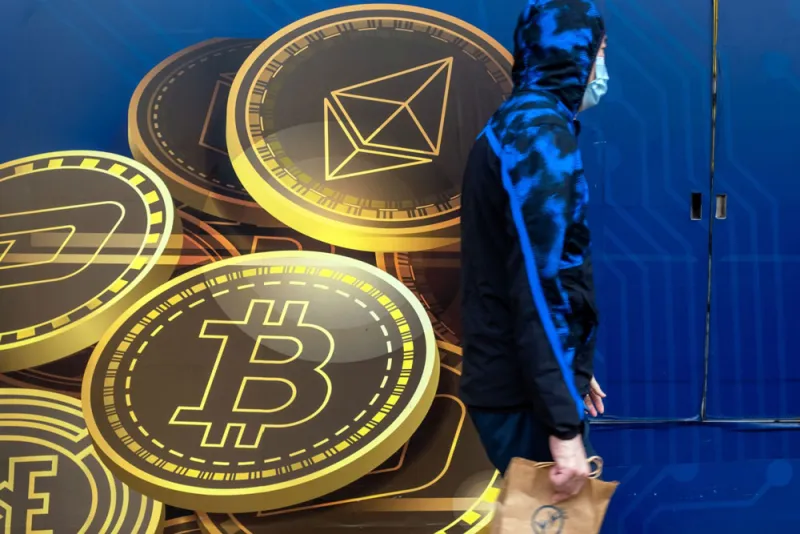Pension funds and endowments have long had to balance the potential high returns of being an early investor in an asset class with the outsize risks that come with new types of investments. But bitcoin and other cryptocurrencies present an added layer of risk, including an uncertain global regulatory environment, extreme market volatility, and complex technology.
Institutional investors, however, are coming around. According to a new survey of 1,100 global institutional investors from Fidelity Digital Assets, seven in 10 respondents expect to buy or invest in digital assets in the future. Out of the respondents interested in digital assets, 90 percent expect to allocate some part of their portfolio to digital assets in the next five years. Fidelity Digital Assets, which provides custody and execution for the asset class, conducted the study with Coalition Greenwich and the Fidelity Center for Applied Technology between early December 2020 and early April of this year.
Among the 408 U.S. investors surveyed, 33 percent of institutions hold investments in digital assets, up slightly from 27 percent in 2020.
“There’s an overall positive sentiment about digital assets,” Christine Sandler, head of sales and marketing at Fidelity, told Institutional Investor. “By 2026, we expect digital assets to be even more mainstream.”
Currently, 52 percent of all survey respondents, across Asia, Europe, and the U.S., are invested in digital assets.
But institutional investors, not surprisingly, have some concerns about the crypto world. According to the survey, respondents cited price volatility as the primary barrier to adoption of digital assets within their portfolios. Respondents also were concerned about the lack of transparency and availability of tools and analytics to truly gauge the value of cryptocurrencies and assess potential market manipulation.
Jim Neumann, CIO of Sussex Partners, a hedge fund advisory firm, agreed that price volatility deters some of his firm’s clients from investing in digital assets. Neumann also said competition, particularly from governments, is another concern for his institutional clients looking into digital assets.
“More so on the adoption front, there’s a lot of concern about competition, particularly competition from sovereigns,” he said. “If the U.S. or China, or whoever, goes into a digital yen or digital USD, then that's going to change the game.” (China recently introduced its own digital currency, but it’s controlled by its central bank. Cryptocurrencies operate outside official government cash systems.)
Despite a dynamic list of issues and concerns, investors are adopting digital assets for their portfolios. Eight in 10 institutional investor respondents believe digital assets should be a part of a portfolio. With increased adoption, survey respondents said they would like to see more services, such as increased access to electronic trading platforms and market and data analytics. Respondents also called for increased safety and security of crypto assets.
Among survey respondents, those in Asia had the strongest belief that digital assets are an important part of institutional portfolios. In Europe, 77 percent of investors believed crypto deserved a place in portfolios. In the U.S., 69 percent of investors said digital assets were important.
“Last year was the first year we saw what we believe is a surprising strength in the non-U.S. numbers,” said Sandler.
From Neumann’s perspective, region isn’t the only factor that divides institutional investors on the digital asset class. For his clients, the divide is also generational. Neumann said his more “progressive, younger, tech-savvy” clients have a greater focus on the asset class while more seasoned investors have a harder time getting into the space.
Investors who grew up with technology understand the transformative potential of the tech innovations underlying cryptocurrencies, while investors with longer tenures in the industry have attempted to use decades-old tools and measures that were built for other asset classes to assess digital assets.
“They tend to try to assign some kind of fundamental analysis to what they’re doing, and they have a tough time with that, particularly in the digital currency region,” he said.
While cryptocurrencies dominate the headlines, both Neumann and Sandler said investors are interested in a diversity of options in the digital asset space. Neumann said out of the estimated 50 percent of his clients interested in digital assets, around 20 percent are into coins and the other 30 percent are diving into blockchain, the underlying technology that many think will change the financial industry broadly. Sandler said the challenges of holding physical bitcoin has driven increased interest in a “diverse set of digital assets” among respondents.







